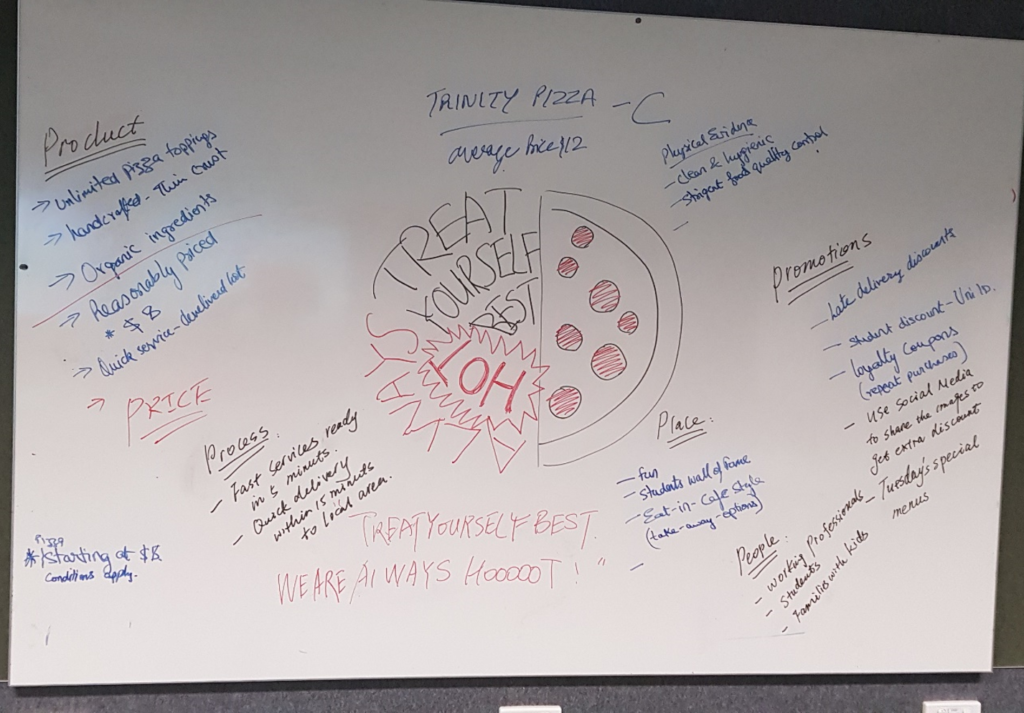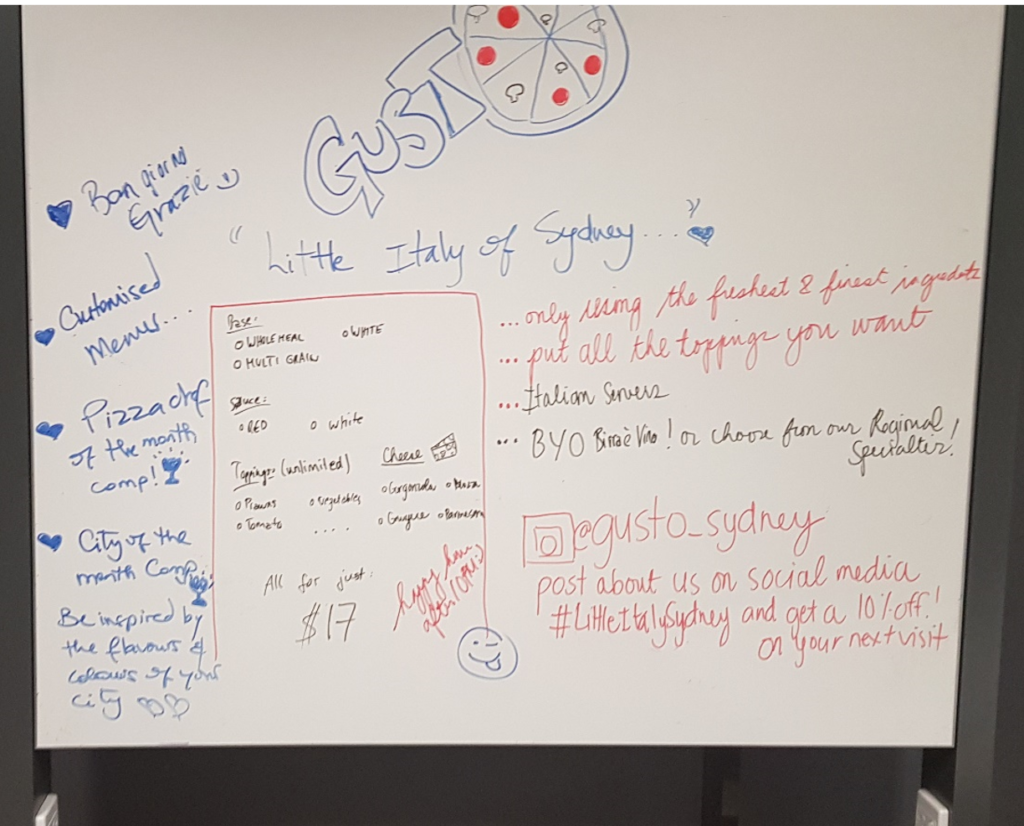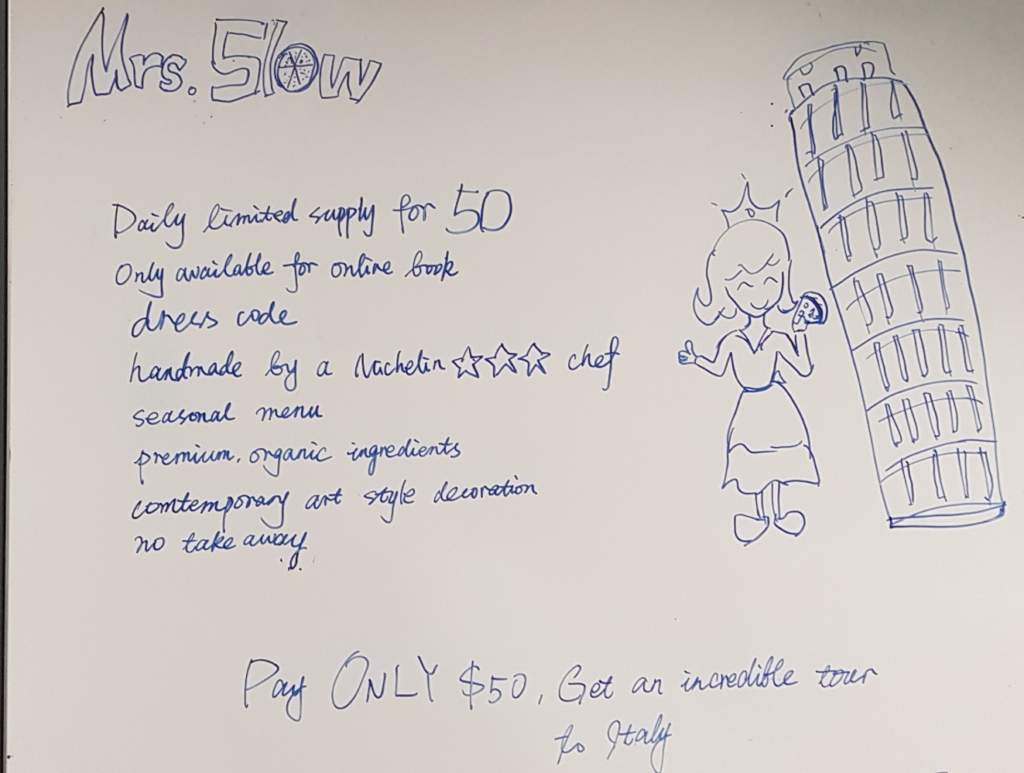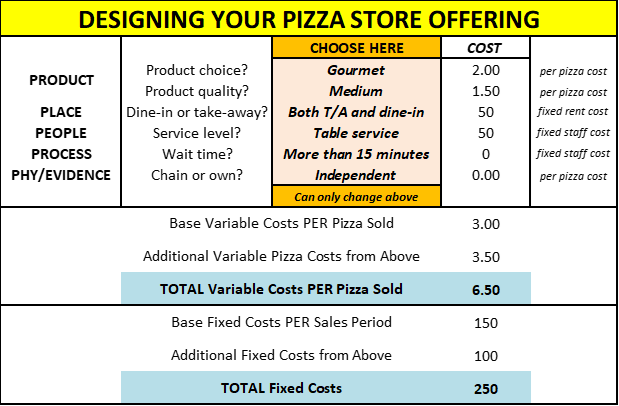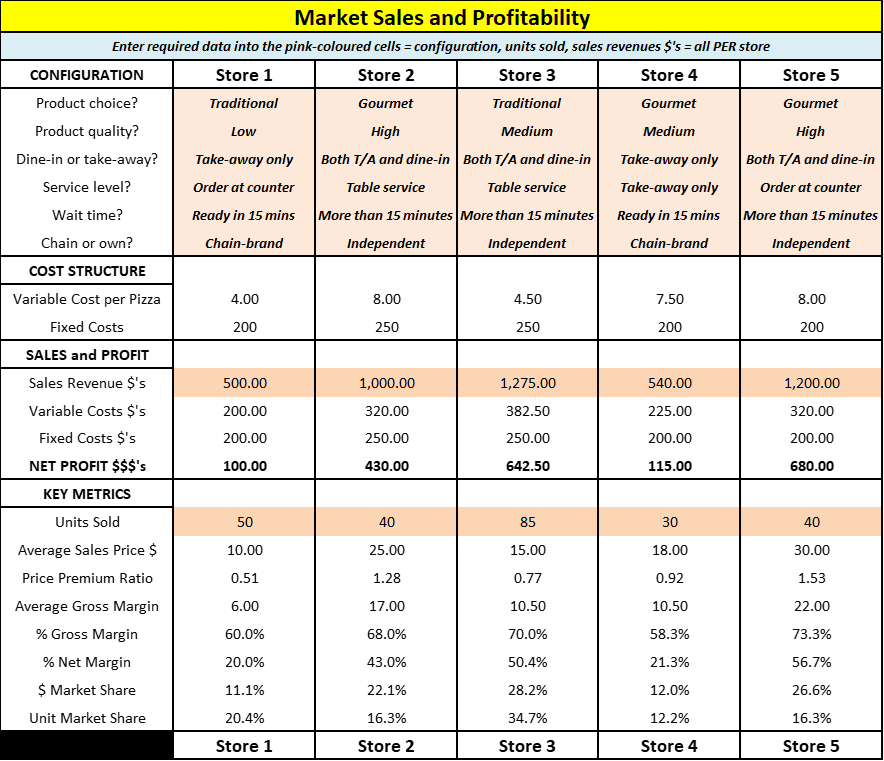Topics
-
Sim Game, strategy, product, price, place, profits
Teaching Notes
Overview of the Interactive Marketing Game
This is a free marketing game that requires students working in teams to design their own pizza store and compete with other student groups. Generally, I found that this game is a lot of fun students get quite engaged. Part of the reason for this is that they have a good understanding of pizza (fast food) business, so they find it very easy to get involved in the store planning and design.
There are two variations of this marketing game:
- Interactive = Students and as customers and business owners and trade/interact with each other in the classroom buying and selling pizza
- Non-interactive = students “vote” individually on how they would spend their monthly pizza budget between the competitive offerings
The choice of which variation of the game to use will depend upon: time available (interactive takes longer = 2-3 hours vs 1 hour for non-interactive), physical space for interactive trading, cohort of students (but please note that I have even used this game at MBA level).
The game is a very effective learning exercise for getting students engaged as it is highly competitive as well as a fun, social activity. It is ideal for early in the semester/term – to also acts as an icebreaker – or for when groups are established and are working well.
Please note that there is an instructional video at the bottom of this page.
Download the Pizza Game Excel File
- Download the free Excel template for running this marketing game: pizza store design 2021
- Download Editable Slides (Long-term Members Only):
What Students Need to Do
- In teams (up to 5 teams – or can work with 2 markets of 5 teams) – students design their own a pizza store offering
- They give it a name, logo, tag-line
- They outline their value proposition = how they are different
- They write this up on a whiteboard or a large sheet/poster
Here are three examples (on whiteboards) from one of my classes…
In my experience, students enjoy this planning stage for their pizza store and you should allow at least 30 minutes for this stage. Sometimes students want more time, as they are fine-tuning their marketing mix based upon their competitive observations of other groups.
But when designing their stores… students also need to plan their pizza store with COSTS in mind
This means that higher quality designs (e.g. food, service and facilities) have cost implications – just like in real business life.
Students will use an Excel template (optional) to help plan out their cost structure. If students do not have Excel – you can show them this summary table with the various cost implications of their store design and process.
Let’s summarize the product pizza cost (unit cost per pizza):
- Traditional flavors, low quality (base cost) = $3/pizza
- Traditional flavors, medium quality = $4.50/pizza
- Traditional flavors, high quality = $6/pizza
- Gourmet flavors, low quality = $5/pizza
- Gourmet flavors, medium quality = $6.50/pizza
- Gourmet flavors, high quality = $8/pizza
As can be seen… their COST of their pizzas can vary from $3 to $8 depending upon their product (and positioning). If they choose to be part of a branded franchise, such as Domino’s, this adds another $1/pizza as the franchise fee will be sales based.
The above are all variable costs – but there are fixed costs as well (also shown in the above table) – which we can summarize as:
- Rent = $150/period (store with take-away only facilities)
- Rent = $250/period (store with take-away and dine-in facilities)
- Staff (extra) = $50/period (if offer table service, like a restaurant)
- Staff (extra) = $50/period (if offer food within 30 minutes)
If you give students access to the spreadsheet, then these costs are automatically calculated for them. Here is an example:
Or they can work out their cost structure manually, as per this decision sheet – which is also included in the game spreadsheet (that you can print out and provide to students):
Playing the Game = Non-Interactive Version
In this variation of the pizza marketing game, one student from each group will take around a minute to present to the class how their pizza store is differentiated and why customers should buy from them.
After this “selling process”, all students vote on how they would spend their monthly pizza budget. Depending upon how many students are in the class, you should tell them that they have between $100 and $200 a month that they spend on take-away and dine-in pizza.
And students need to write down how they would spend their monthly budget across the different pizza stores. As an example they might write down:
- Store A = $50 = 3 pizzas
- Store B = $0 = 0 pizza
- Store C = $20 = 1 pizza
- Store D = $30 = 2 pizzas
- Store E = our store
- Total = $100
IMPORTANT: As all students are part of a group that has their own pizza store, they are NOT allowed to spend money in their own store. As we can see from this student, they are part of Store E and have split their budget across the other four stores.
Once all students have voted and you have collected all their written decisions, you will need to have a break (or save the results for the next class) because you will need to enter their marketing mix design and there sales results into the spreadsheet, which will automatically calculate the results for you. Depending upon class numbers, this will take around 20 minutes.
Here is an example of the output from the game spreadsheet:
You enter each of the store designs at the top of the sheet (and the cost structure calculates for you) and then you enter the amount spent (across all students) and how many pizzas (units) that they collectively bought. This is easier if you have a tally sheet.
Playing the Game = Interactive Version
The interactive version of the pizza game is identical to the non-interactive version, that students do not vote on which pizzas they will buy – instead they act as customers with token money at each of the pizza stores (except their own of course).
In terms of logistics, one student is the shopkeeper per group, while the other students are customers and spend their money at other pizza stores.
What tends to happen, for some reason, is that students start negotiating deals and the price point becomes quite flexible – particularly if some stores are not generating sales initially. I have actually seen groups who sell a lot of pizza but BELOW cost, because they get caught up in the competitiveness of the game.
Therefore, to play the interactive version of the game, you will need:
- Some form of pretend money = such as: poker chips, tokens, Monopoly money (for EACH students monthly budget)
- Some form of pretend products = such as Lego bricks or buttons (for EACH store, to represent pizzas for sale)
Teaching tip: it is a good idea to have a reliable student to help with organizing the money and tokens, as during the trading component some students and stores need change to make their transactions easier.
At the end the trading period – when students have spent most/all their money – you need each store to conduct an inventory of:
- How many pizzas they sold (based on how many pizza tokens they have left versus how many they had at the start)
- How much revenue they took (based upon how much money tokens they have, minus any change/cash that they may have started with)
You can then quite quickly enter these results into the spreadsheet – because there will be only 10 numbers to enter (five groups X revenue figure and sales figure). You can then share the financial results with the students.
Teaching tip: given the “possibility” of some student groups exaggerating their sales revenue, you may appoint a representative from another group to be an observer/checker of each stores stock take – to avoid potential conflicts and challenges.
Optional Repeat Round
The spreadsheet allows for the results from three marketplaces to be entered. This gives you the capacity to:
- split students into multiple marketplaces if you have a large number of students (note a teaching assistant is recommended for large groups)
- or to allow the students to reflect on their performance and to REDESIGN their pizza store offering and then rerun the exercise
By allowing redesign and rerunning the marketplace, you can see whether students have learned from their performance – which is a key part of marketing = constantly improving and evolving. Obviously, this will add time to the exercise. Alternatively, you could repeat the exercise at a later time in the term/semester.
Debrief Session
In this exercise there are multiple components to discuss including:
- Which elements of the marketing mix were most important?
- On what basis did customers choose between the pizza offerings?
- How important is it to consider costs when designing your marketing?
- If you were to redesign your pizza store, what would you do differently?
- Why was the “winning store” the most successful one?
Video Instructions
Related Activities
